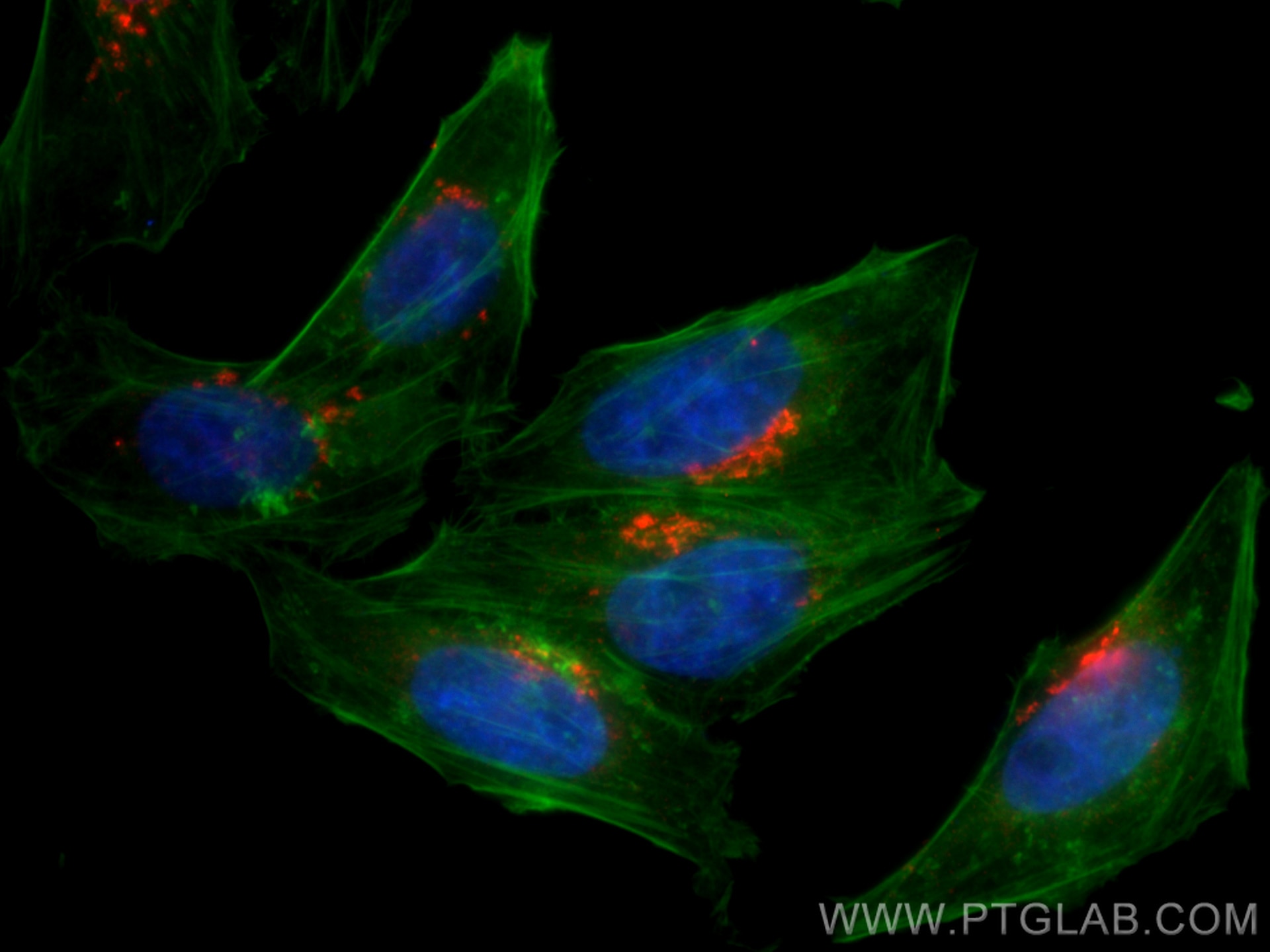Tested Applications
| Positive IF/ICC detected in | HepG2 cells |
Recommended dilution
| Application | Dilution |
|---|---|
| Immunofluorescence (IF)/ICC | IF/ICC : 1:50-1:500 |
| It is recommended that this reagent should be titrated in each testing system to obtain optimal results. | |
| Sample-dependent, Check data in validation data gallery. | |
Product Information
CL594-67505 targets TMF1 in IF/ICC applications and shows reactivity with Human, mouse, rat samples.
| Tested Reactivity | Human, mouse, rat |
| Host / Isotype | Mouse / IgG1 |
| Class | Monoclonal |
| Type | Antibody |
| Immunogen | TMF1 fusion protein Ag17666 Predict reactive species |
| Full Name | TATA element modulatory factor 1 |
| Calculated Molecular Weight | 1093 aa, 123 kDa |
| Observed Molecular Weight | 150-160 kDa |
| GenBank Accession Number | BC126123 |
| Gene Symbol | TMF1 |
| Gene ID (NCBI) | 7110 |
| RRID | AB_2934771 |
| Conjugate | CoraLite®594 Fluorescent Dye |
| Excitation/Emission Maxima Wavelengths | 588 nm / 604 nm |
| Form | Liquid |
| Purification Method | Protein G purification |
| UNIPROT ID | P82094 |
| Storage Buffer | PBS with 50% Glycerol, 0.05% Proclin300, 0.5% BSA, pH 7.3. |
| Storage Conditions | Store at -20°C. Avoid exposure to light. Stable for one year after shipment. Aliquoting is unnecessary for -20oC storage. |
Background Information
TMF1, also named as ARA160, is a potential coactivator of the androgen receptor. TMF1 mediates STAT3 degradation. TMF1 plays critical roles in two RAB6-dependent retrograde transport processes: one from endosomes to the Golgi and the other from the Golgi to the ER. TMF1 binds the HIV-1 TATA element and inhibits transcriptional activation by the TATA-binding protein (TBP). The antibody is specific to TMF1. TMF1 can be detected as 150-160 kDa after posttranslational modification.
Protocols
| Product Specific Protocols | |
|---|---|
| IF protocol for CL594 TMF1 antibody CL594-67505 | Download protocol |
| Standard Protocols | |
|---|---|
| Click here to view our Standard Protocols |



